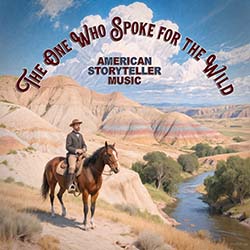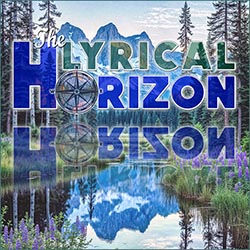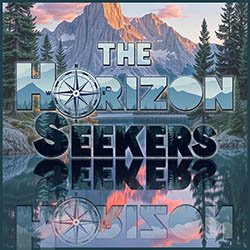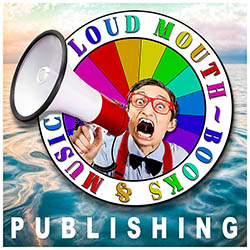American Spotlght: Teddy Roosevelt
Theodore Roosevelt in the American West: A Legacy Carved by Wilderness
Before Theodore Roosevelt became the 26th President of the United States, he was a young man searching for healing, clarity, and purpose. That journey led him to the wild and wind-swept Badlands of western North Dakota—landscapes that would forever shape his character and fuel a national conservation movement.
Roosevelt first arrived in the Dakota Territory in 1883 as a 24-year-old New York legislator, drawn by the promise of big game hunting. What began as a sporting trip quickly became something deeper. Captivated by the rugged beauty of the landscape and the resilience of the people who called it home, Roosevelt invested in the Maltese Cross Ranch, just outside the frontier town of Medora.
But it was tragedy that cemented his bond to the West. In 1884, Roosevelt lost both his wife and his mother on the same day. Grief-stricken, he returned to the Badlands to find solitude and strength in its raw and untamed country. He established the Elkhorn Ranch along the Little Missouri River—a place he would call his “home ranch.” There, Roosevelt rode with cowboys, herded cattle, chased outlaws, and endured blistering winters. His time in North Dakota helped forge a deep respect for nature, self-reliance, and the American spirit.
“I never would have been President if it had not been for my experiences in North Dakota,” he later reflected. That crucible of hardship and wild living instilled in Roosevelt a lifelong devotion to the American landscape. When he entered the White House in 1901, he brought that vision with him—not as a nostalgic memory, but as a call to action.
The Conservation President
Roosevelt’s years in the West gave him firsthand experience of how unchecked exploitation could degrade the land. As President, he became a fierce protector of America’s natural heritage. His administration transformed the government’s approach to forests, rivers, wildlife, and scenic landscapes.
In just under eight years, Roosevelt preserved over 230 million acres of public land—more than any president before or since. He founded the United States Forest Service and signed the landmark Antiquities Act of 1906, which allowed presidents to designate national monuments by proclamation. With that authority, he saved some of the country’s most iconic places from destruction.
He established five national parks, including Crater Lake, Wind Cave, and Mesa Verde, and designated 18 national monuments, including the Grand Canyon, Muir Woods, and Devils Tower, the very first national monument. His legacy is not only in what he preserved but, in the values, he enshrined: that wild lands matter, that beauty has value, and that the American people are stewards of their country’s natural soul.
Today, the rugged Badlands where Roosevelt once rode are preserved in his honor as Theodore Roosevelt National Park, established in 1947. It stands not only as a tribute to the man but as a living reminder of how deeply place can shape a person—and how one person can help protect a nation's natural resources.

The Midnight Ride from Mount Marcy:
How the Adirondack Wilderness Forged a President
On the wild, high slopes of the Adirondack Mountains, where the Hudson River is born in a tiny alpine pool, American history was once rewritten in a frantic, 40-mile midnight dash through mud and darkness. It is the story of a man who climbed a mountain as a Vice President seeking peace and came down as the leader of the free world. This is the story of Theodore Roosevelt's dramatic ascent to the presidency.
The Calm Before the Storm
In September 1901, the nation was on edge. President William McKinley had been shot by an assassin at the Pan-American Exposition in Buffalo. Vice President Theodore Roosevelt, a man of boundless energy, rushed to his side. But as the week wore on, the news from the doctors turned optimistic. The President seemed to be recovering, his condition stabilizing.
Feeling he was no longer needed and antsy from the death-watch atmosphere, Roosevelt retreated to a place that restored his soul: the Adirondack wilderness. He joined his family at the Tahawus Club, a private preserve deep in the mountains, eager to escape the tension and breathe the crisp mountain air. On the morning of September 13th, assured by a telegram that McKinley's recovery was proceeding smoothly, Roosevelt decided to embark on one of his favorite challenges: a hike up Mount Marcy, New York's highest peak.
A Fateful Climb to the Clouds
With a small party, Roosevelt began the strenuous ascent. The trail wound through dense forests of balsam and spruce, the air growing thin and cool. Their destination was Lake Tear of the Clouds, a small, pristine pond nestled near the summit—the highest source of the mighty Hudson River. As they ate lunch by its shore, surrounded by the immense, silent beauty of the High Peaks, Roosevelt was as far from the politics and turmoil of Washington as a man could be.
But below them, history was turning. In Buffalo, President McKinley had taken a sudden, catastrophic turn for the worse. Gangrene had set in, and his life was slipping away.
A frantic effort began to reach the Vice President. A telegram was sent to the nearest station, and a mountain ranger named Harrison Hall was dispatched to find Roosevelt on the vast mountain. Hall ran for miles, scrambling up the steep, rugged trail. He finally found the Vice President's party as they were descending in the late afternoon. He handed Roosevelt the telegram, its message stark and urgent. The President was dying.
The Midnight Ride
Everything changed in an instant. The leisurely descent became a desperate scramble to get off the mountain before nightfall. When they reached the Tahawus Club, another telegram was waiting with even graver news. Roosevelt knew he had to get to Buffalo immediately.
The problem was immense. He was deep in the wilderness, miles from the nearest train station in North Creek. The roads were little more than treacherous, mud-slicked tracks through the forest. The time was nearly 10:30 PM.
What followed was a ride that has become the stuff of Adirondack legend. A series of buckboard wagons and drivers were arranged in a relay. The first driver, Mike Cronin, took the reins for the most dangerous leg of the journey. With only the swinging light of lanterns to pierce the pitch-black night, Cronin urged his horses on, careening through the darkness at breakneck speed. The wagon wheels sank in mud, slid on loose rocks, and narrowly missed plunging into ravines as Roosevelt, a man of action, held on tight.
After changing horses and wagons multiple times, Roosevelt finally arrived at the North Creek train station at 5:22 AM on September 14th. As he stepped onto the platform, a final, somber telegram was handed to him. President William McKinley was dead.
In the quiet, gray dawn of that Adirondack station, Theodore Roosevelt, the rugged outdoorsman, the soldier, the writer, and the Vice President, absorbed the silent, heavy truth: he was now the 26th President of the United States.
The story is a powerful metaphor for the man himself. Forged in the wild, tested by the elements, Roosevelt was a force of nature who was called to lead from the very heart of the American wilderness he fought so hard to protect. He went up the mountain seeking solitude and came down bearing the weight of a nation.









